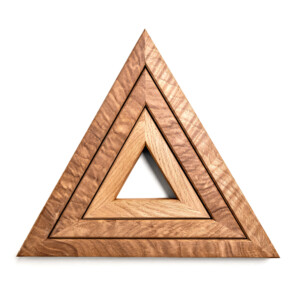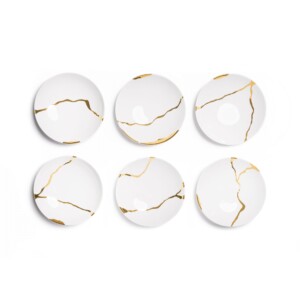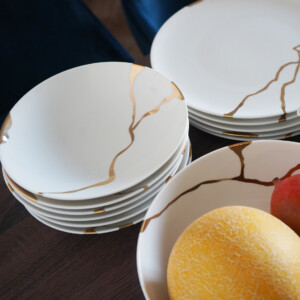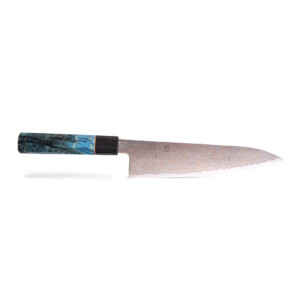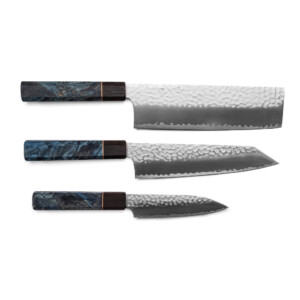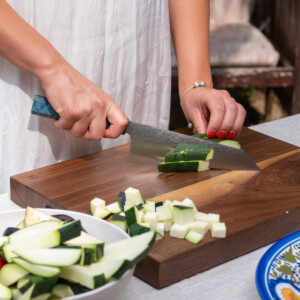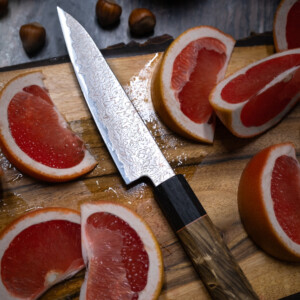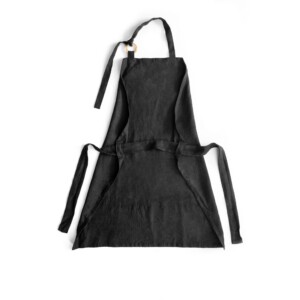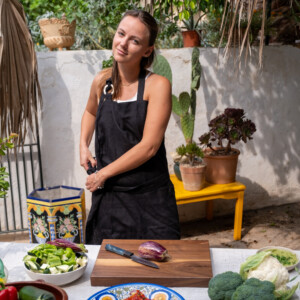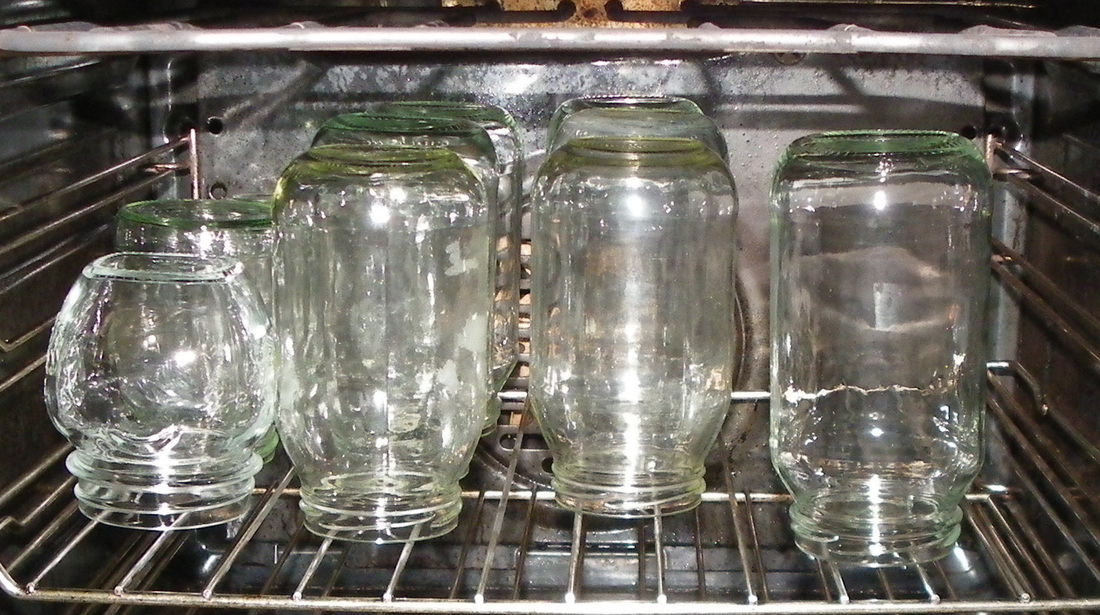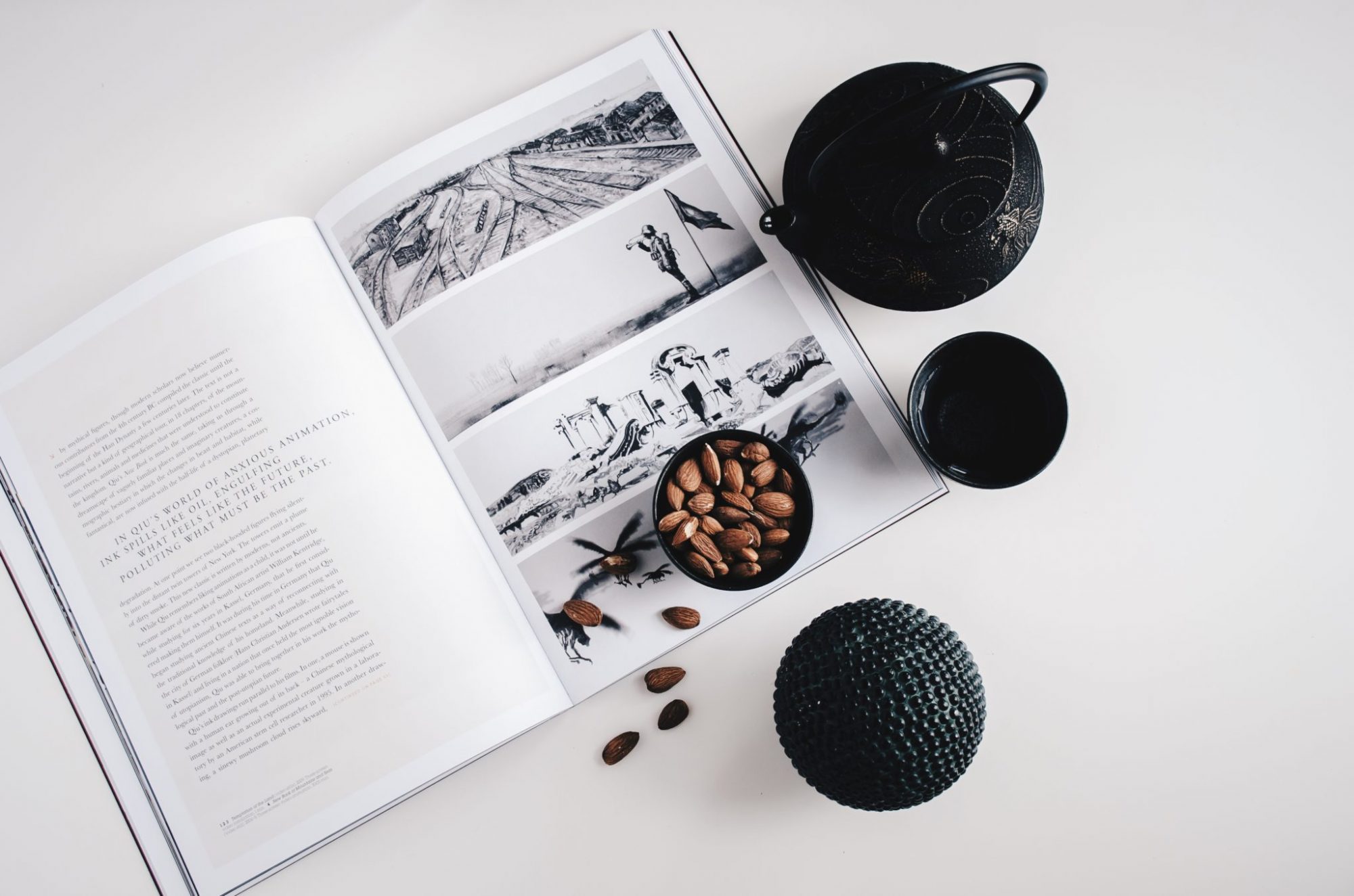As a home cook, you know that a reliable kitchen knife is an essential tool in your culinary adventures. It’s the key to achieving precise cuts, effortless chopping, and overall culinary mastery. But with the wide range of knife types available, it can be overwhelming to navigate the world of kitchen knives, especially if you’re not familiar with Japanese names. Don’t worry! In this detailed article, I’ll be your guide, helping you understand the key differences between Western and Japanese kitchen knife types. Together, we’ll explore their unique features, uses, and ultimately empower you to make informed choices for your culinary pursuits.
Let’s start by unraveling the world of Western kitchen knives, also known as European-style knives. These knives have a rich history and have long been favored by home cooks and professional chefs worldwide. As a home cook myself, I understand the importance of having the right knife in your hands. So, let’s dive in and explore some of the most common Western knife types:
- Chef’s Knife: Ah, the versatile chef’s knife! This is the workhorse of your kitchen, the trusty companion that will handle a wide range of tasks. With its broad blade and curved edge, the chef’s knife excels at slicing, dicing, and chopping vegetables, fruits, and herbs. It’s like an extension of your hand, allowing you to tackle any ingredient with ease and precision.
- Santoku Knife: Imagine a knife that embodies the spirit of balance and versatility. That’s the Santoku knife! With its shorter, wider blade and a straighter edge, this knife is perfect for slicing, dicing, and mincing. It’s like a reliable partner that effortlessly handles everyday tasks, making your kitchen adventures a breeze.
- Paring Knife: When it comes to delicate tasks and intricate work, the paring knife is your best friend. Its small, narrow blade and pointed tip make it ideal for peeling, trimming, and creating intricate garnishes. This little gem will help you achieve precision and finesse, bringing your culinary creations to the next level.
- Bread Knife: As a home cook, you know the joy of freshly baked bread. But cutting through that crusty exterior without squishing the soft interior can be a challenge. Fear not! The bread knife is here to save the day. With its serrated blade, this knife effortlessly glides through bread, ensuring clean slices and preserving the texture you crave.
- Carving Knife: Picture a beautifully roasted turkey or a succulent roast beef. Now imagine yourself skillfully carving those delectable meats. That’s where the carving knife shines. With its long, thin blade and pointed tip, it’s designed to make precise, thin slices, ensuring that your presentation is as impressive as the taste.
Now that we’ve explored the Western knife types, let’s venture into the captivating world of Japanese kitchen knives. Japanese knives are known for their exquisite craftsmanship, attention to detail, and exceptional cutting performance. As a fellow home cook, I understand the desire to elevate your culinary skills and explore new possibilities in the kitchen. So, let’s discover the key Japanese knife types:
- Gyuto: The Gyuto knife is often referred to as the Japanese equivalent of a Western chef’s knife. With its curved edge and versatile blade, it’s your go-to knife for a wide range of tasks, from slicing and dicing to chopping and mincing. It combines the best of both worlds, providing you with the precision of a Japanese knife and the familiarity of a Western-style knife.
- Santoku: Similar to its Western counterpart, the Santoku knife is a multi-purpose knife that excels at slicing, dicing, and chopping. Its shorter, wider blade and straighter edge make it a popular choice among home cooks. With a Santoku knife in your hand, you’ll feel confident tackling various ingredients, from vegetables to boneless meats.
- Nakiri: If you’re a fan of vegetable-centric dishes or want to up your salad game, the Nakiri knife is a must-have. Its straight blade and squared-off tip make it perfect for precision vegetable prep, such as chopping, slicing, and dicing. Embrace the art of Japanese knife-making with the Nakiri knife, and watch your vegetable creations flourish.
- Deba: Are you a seafood lover? Then the Deba knife will be your trusted companion when it comes to fish and other delicate proteins. This sturdy, single-beveled knife is designed for filleting fish, deboning poultry, and even breaking down larger cuts of meat. Its robust construction and precise cutting edge ensure that you can handle even the most intricate tasks with ease.
- Yanagiba: Picture yourself slicing through beautifully marbled, melt-in-your-mouth sashimi. That’s where the Yanagiba knife shines. With its long, slender blade and single bevel edge, it’s specifically designed for slicing raw fish and creating thin, delicate slices. Elevate your sushi and sashimi experience with the Yanagiba knife, and impress your guests with your knife skills.
Now that we’ve explored the Western and Japanese knife types, you might be wondering which one is right for you. As a home cook, the choice ultimately depends on your personal preferences, culinary aspirations, and the tasks you frequently undertake in the kitchen. While Western knives are known for their versatility and durability, Japanese knives offer exceptional cutting performance and precision.
Now, something for knife geeks.
If you’re into tech details, then you should know that the fundamental difference between Western style knives and their Japanese counterparts, is the fact, that the Western knife is sharpened on both sides of the blade. They therefore have what is called a symmetrical bevel. This obviously has an impact on the way the Western knife is sharpened.
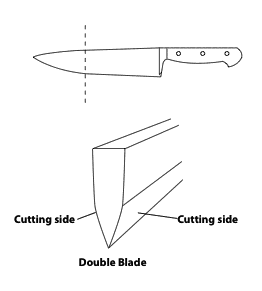
When choosing a knife sharpener for western style knives, you need to ensure that the tool is able to sharpen both sides of the blade.
You will also hear much about the angle of an edge when it comes to sharpening. With a Western knife, you must pay attention to the combined angle of each edge is the overall angle. Factory edges for Western knives range between 18 to 28 degrees. It is a figure far higher than that of the average Japanese style knife.
Western style knives are curved more
Western style knives also differ to Japanese in that many designs are curved along the blade. You utilise this design feature every time you rock your knife to and fro in a chopping action. The curve allows you to apply different amounts of pressure to specific areas of the blade.
This curved shape of Western style knives obviously means that you should check that it has the facility to sharpen your knife all the way along the curved edge when choosing which knife sharpener to buy.
The blade thickness is another difference between both knife styles. Traditionally, Western style knives are built using softer steel. In order to give the knife the required density and strength, more material is required. As such, you will often find that a Western style knife is more robust.
The softer steel used in Western knives does means, that the edges become dull faster than the average Japanese knife. Heavy use will see imperfections appear along the blade. However, the fact the material is softer, means most Western style knives can be sharpened with great effect.
Japanese Style Knives

vs Western style knife

If you have read the section above, you will already know that the biggest difference between a Japanese style and western style knife, is the fact the Japanese knife has a single bevel – in other words, the blade is only sharpened on one side.
If you’re looking for a knife that combines the best of both worlds, we recommend considering the Sakai Kyuba Chef’s Knife. This masterpiece of craftsmanship embraces the spirit of Japanese knife-making while incorporating elements of Western-style knives. With its sharp, long blade and high-carbon stainless steel construction, it provides excellent cutting performance and durability. Whether you’re slicing, dicing, or chopping, the Sakai Kyuba Chef’s Knife will be your trusted companion in the kitchen. As a home cook, the choice between Western and Japanese kitchen knife types comes down to personal preference, culinary needs, and the tasks you frequently undertake. Both styles offer their unique advantages and are crafted with precision and excellence. So, explore, experiment, and choose the knife that resonates with your cooking style and inspires you to create culinary masterpieces. Remember, a well-chosen knife is not just a tool but a culinary companion that will accompany you on your gastronomic adventures.










